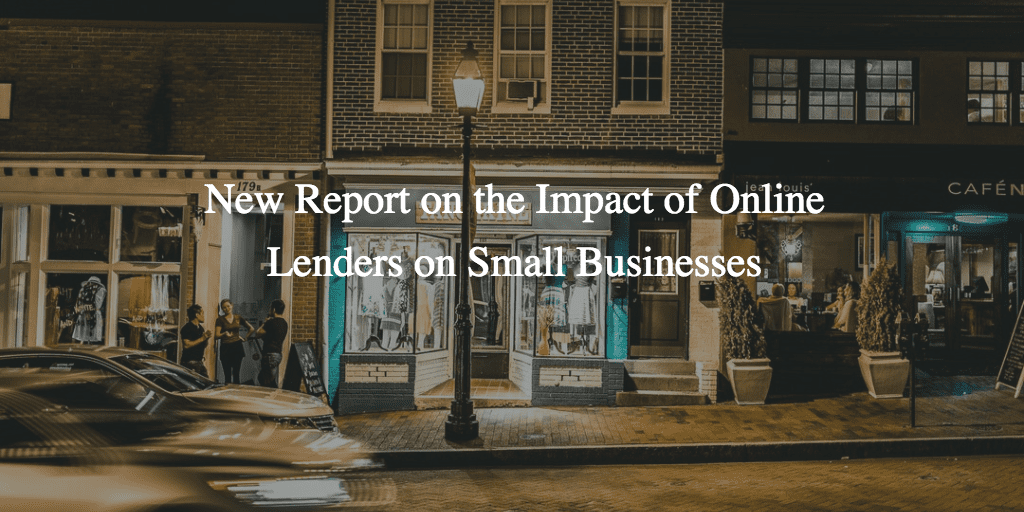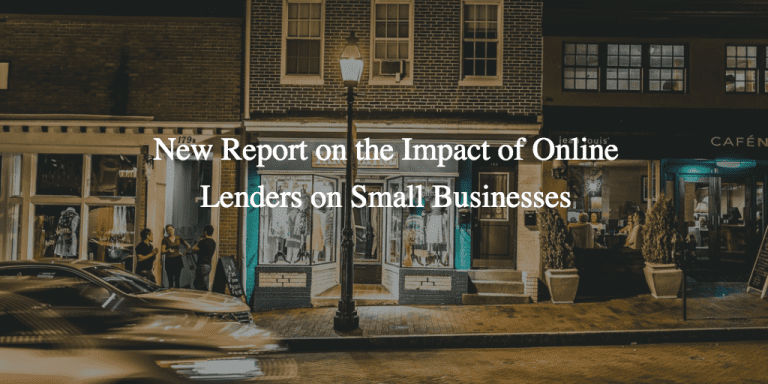
Today a new report was released on how online lenders are helping small businesses which in turn is creating economic activity across the US. The report titled “The Economic Benefits of Online Lending to Small Businesses and the U.S. Economy” was put together by NDP Analytics and was sponsored by the Electronic Transactions Association, the Innovative Lending Platform Association (ILPA) and the Small Business Finance Association (SBFA).
Most of us are aware of the importance of small businesses in the US economy. Small businesses employ over half of private-sector workers in the US, so access to capital for small businesses is critical to their success. Fortunately, online lenders such as the ones mentioned in the report have focused on serving the needs of businesses and activity has picked up over the last few years. Both awareness of these alternative options and the amount lent on these platforms is increasing. Originations at five leading online small business lenders increased by 50% in three years, from $2.6 billion in 2015 to $3.9 billion in 2017.
Nearly $10 billion of funding was provided to 180,000 small businesses from 2015 to 2017 according to data which included leading platforms OnDeck, Kabbage and Lendio. This activity has generated $37.7 billion in gross output, created 358,911 jobs and $12.6 billion in wages.
Another highlight of the study was reporting on where these small businesses are operating. Almost one third of small business borrowers are in lower-income communities and about 24% of this borrower demographic are micro businesses with less than $100,000 in annual sales.
What makes small business lending unique is the amount of capital needed can vary widely and one of the reasons online small business lenders have been successful is because they have been able to efficiently underwrite smaller dollar loans. According to the study:
About 42 percent of small businesses borrowed between $10,000 and $50,000 from five online small business lenders with the average amount being $55,498.
One of the most interesting data points from the research was that on average, for every $1 lent to small businesses, sales for these small business borrowers increased by $2.31, creating $3.79 in gross output in local communities across the country.
As Nam Pham, Ph.D., report author and Managing Partner at NDP said in the press release:
The economic benefits of online lending are far reaching and extend beyond the funding used by small businesses to maintain or expand their operations. As these businesses succeed, so do the communities around them. Small businesses are increasingly turning to online lenders to help cover inventory, payroll for employees, and other expenses at critical junctures in their growth. The loan impacts not just the borrower, but those who work and engage with that business.
Conclusion
The small business lending market looks vastly different than it did 10 years ago. Not only are there more lending choices for small business owners than ever before but these choices are quicker and more convenient than in the past. The platforms included in this study and other innovative online small business lenders have been the driving force behind this shift. It’s a great to see a report put together which highlights just how impactful access to capital can be and it is a sign of great things to come as this market continues to grow.


